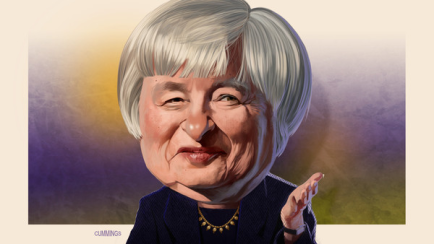October 20, 2014
Dear Friends of PPE,
Over the last six months we have had solid deal flow and have seen a number of good opportunities. However, the market continues to be challenging for us as valuations remain high and competition fierce. We are currently finalists in three deal processes and remain optimistic that we can put some points on the board this year. Without a lot to talk about that we can discuss publicly, for your entertainment I’ve decided to play amateur economist.
All value investors are by nature contrarians, so we look for patterns (in companies, industries and the broader economy) that may cut against the common wisdom. If we can achieve insights that are not widely understood, we can make better investment decisions. In thinking about the US economy recently, I asked myself: “What if the common wisdom is wrong?”
What if?
The Federal Reserve has nursed the US economy back from the brink of disaster. The stock market has been on a tear and the economy is returning to normal. Economists are confident that over time economic growth will bring our fiscal situation into better balance. Of course, there are still some free market fundamentalists and other kooks wringing their hands about the Fed overreaching and manipulating the financial markets but on the whole they have been proven wrong—our economy is back on track.
Or is it? What if the kooks are actually onto something? What if monetary stimulus is not enough to fix our economic problems long term? What if the Fed’s stimulus programs have actually increased the risk of another, possibly larger, financial crisis in the future? What if, far from shoring up our economic foundations, the Fed has undermined the very mechanisms that would have allowed our economy to return to long term equilibrium? Unpleasant questions, but worth considering.
In pondering these questions, it is worth recalling that (a) the Fed’s monetary stimulus program is an economic experiment whose ultimate results remain unknown, (b) we’re probably only in the third inning (at best) of watching this play out, and (c) the only other country to have tried anything like this without accompanying structural reform (Japan) has experienced 25 years of economic stagnation and has a current debt-to-GDP ratio of 240%.
Is Stimulus Enough?
The common economic wisdom seems to be that stimulus alone is sufficient to return the economy to long term health. The theory is that the massive boost to liquidity provided by the Fed has increased asset values, stimulated demand and that these will create a virtuous cycle of growth that will ultimately return everything to “normal”. This is possible but it is far from certain. I doubt that even the Fed has a high level of confidence in this scenario. The problem is that underlying conditions in the economy are anything but normal and the recent benign conditions engineered by the Fed are likely unsustainable.
A significant but sometimes overlooked issue related to the Fed’s stimulus program is the strong probability that the program has widespread unintended—and potentially negative—consequences. Like the Heisenberg principle in quantum physics, the Fed’s stimulus program is almost certainly changing the behavior and motivations of the economic actors it is seeking to influence. We can see this in Wall Street’s exuberance and appetite for risk over the last few years. We may also see this in Main Street’s reluctance to hire workers and invest in the real economy.
From a businessperson’s perspective, consistent economic rules and a market mechanism for achieving long term economic equilibrium are essential preconditions to planning for the future. They allow a business to rationally weigh probabilities and ultimately make long term investments in people and productive assets. By contrast, recent US economic policy (including that of the Fed) has been characterized by shifting economic rules, financial market manipulation and, in some cases, picking winners and losers. A consequence of these policies is uncertainty. Given this, perhaps we should not be surprised that businesses have seemed reluctant to invest and hire for the long term, notwithstanding superficial improvements in the economy.
Finding Equilibrium
Market forces cannot work properly in an environment of massive, sustained monetary stimulus. The Fed knows this and in fact a prime objective of the Fed’s monetary stimulus was precisely to stop market forces from working. If we rewind to mid-2008, the proximate cause of the Great Recession was the bursting of the real estate bubble. The bursting of the bubble was the market at work, seeking to find a new equilibrium after a period of excess. Since then the Fed has worked to reverse the judgment of the market. It’s easy to see why they wanted to do this but it is reasonable to ask whether there might be an element of hubris here.
Fed policymakers have acted as though the market crash was the problem. As a result, the policy response of re-inflating the bubble has been, in some ways, like shooting the messenger. In fact, the market crash wasn’t the problem, the real estate bubble was the problem. In a sense, the crash was the solution—admittedly a violent and ugly solution—but fundamentally an instance of the market seeking a new, more sustainable equilibrium following a period of speculative excess.
If you believed, as the Fed apparently did, that the market crash was the problem, you would do the logical thing—you’d try to re-inflate the bubble to go back to the way things were before the crash. This is precisely what they’ve done—asset values have been re-inflated to pre-crash levels, creating an illusion of wealth that, in the absence of other fundamental policy changes, is sustainable only with a continuation of an aggressive easy money policy.
What if re-inflating the bubble was not the answer—what if asset values should be lower? What if there is insufficient organic demand in the market to justify today’s inflated asset values over the long term? That would suggest that the real problem is not that asset values fell too low in the crash, but that debt levels—driven by pre-crash bubble economics—were too high in light of the true fundamental value of the corresponding assets. If so, reducing leverage would be the key to establishing a new foundation for growth. Surely, you think, leverage is no longer a problem—debt levels must have declined as borrowers and governments deleveraged following the recession. Shockingly, the opposite has happened—global debt to GDP has not declined post-recession—it has continued to rise at an increasing pace, driven in part by the Fed’s focus on easy money and credit.
By keeping asset values high and credit freely available, the Fed has arguably hindered the healthy process of debt restructuring that might otherwise have allowed the economy to find a new, sustainable equilibrium and foundation for sustained growth. Instead of de-leveraging, leverage and overall financial risk in the global economy have increased. Looked at from this perspective, we have a disturbing situation—a global bubble that is bigger than that of 2008, a monetary policy that has used most of its bullets, and a Federal Reserve that is risking its own credibility (and that of the currency it oversees) by overtly acting as the ultimate guarantor of global risk.
Like Scotty’s warning on the Starship Enterprise, “Cap’n she’s gonna blow!” we must recognize that the pressures building for another financial crisis are substantial. The break point is probably far from imminent, but we already have some warning signs. Asset values are in many cases re-entering bubble territory, demand is still weak and the Fed has used a lot of its ammo. Allowing the economy to restructure organically through debt restructuring is now politically unfeasible. The Fed may have to double down on its stimulus bet, shouldering even more of the economic risk that is, in a healthy economy, naturally borne by the private sector. It is unclear whether there is a viable exit strategy for the Fed in this scenario.
Structural Reform
Of course the conventional wisdom may be right—we may dodge the bullet and the economy may heal itself over time, giving the Fed the ability to make a graceful exit. However, if this does not happen the results could be fairly catastrophic—either in the form of a sudden crisis or in a long inexorable economic malaise.
We have the ability now to significantly reduce the odds of a worst case scenario. The window for action is narrowing over time, however. Dodging the bullet will require strong political leadership and a bipartisan approach, two things that have sadly been in short supply in Washington. However, miracles do happen on occasion (witness the fact that LeBron James returned to the Cavaliers!). With the right policies it is possible to lay the foundation for a growth economy that can support today’s (otherwise unsustainable) asset values and point the way for continued growth in the future.
Everybody knows what needs to be done—tax reform, entitlement reform and structural reform. A good, bipartisan roadmap for reform already exists in the Simpson-Bowles Plan. These reforms, even if imperfect, would create room for the Fed to retreat, shrink its balance sheet, and assume a more appropriate role in the economy. Tax reform would make us more competitive and address some of the gross injustices in the tax code. Long term fiscal balance would significantly reduce the overall risks to the economy from excessive debt. Structural reform would make government more efficient and responsive. Real businesses on Main Street would be able to plan for the future with confidence, leading to job growth and investment.
Is such reform possible? Oddly, the Fed’s success to date has, in a perverse way, been an enabler of the partisan gridlock that has put our long term economic future at such risk. With the illusion of prosperity, there has been no urgency in Washington to stop the partisan food fight and get down to business. Will it take another financial crisis to spur short-sighted politicians to action? That would be unfortunate, especially since there is such a significant potential for the next crisis to spiral out of control—possibly out of the control of even the wizards at the Federal Reserve.
Calling all Adults
I am not a Fed basher. I acknowledge that they had little choice but to pursue an aggressive monetary stimulus program in the wake of the 2008 financial crisis. Did the Fed’s stimulus program increase the level of moral hazard in the financial markets? Sure. Did it shift risk from financial speculators to taxpayers? Of course. Did it interfere with the healthy process of debt restructuring? Probably. Did they go too far? Time will tell. Did they have any choice? No.
Now, however, the Fed’s job should be over. It is now time for the President and Congress to fix our economy with real, long term structural reforms that give us a foundation for future prosperity.
It is important that the adults in Washington (if there are any) understand the urgency of fixing this problem while they can. Fun as it has been for the last six years to fight over gay marriage, immigration, the President’s golf schedule and other thorny issues, we actually have a far bigger problem to solve—shoring up the foundations of our economy so that we can continue to have the freedom to fight about the little things that bother us.
John Mueller
Partners Private Equity LLC
P.S: You might ask, “What does all this baloney have to do with your approach to private equity investing?” I suppose the answer is that it gives us humility regarding the many things we don’t know. It reminds us to avoid the madness of crowds. And it cautions us to resist the siren songs of frothy valuations and excessive leverage.









